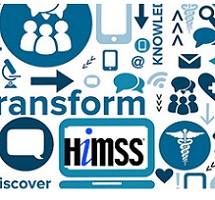 Approximately half of the respondents participate in some type of an alternative payment model, but few view their organization as “highly prepared” for this transition
Approximately half of the respondents participate in some type of an alternative payment model, but few view their organization as “highly prepared” for this transition
As more and more healthcare organizations begin adopting some form of a value-based payment model, the findings of the 2016 HIMSS Cost Accounting Survey suggest provider organizations have a sober assessment of their capabilities in facing the challenges ahead. In fact, only three percent of respondents believe their organization is highly prepared to make the pay-for-value transition. These and other important findings regarding the journey providers are making toward alternative healthcare payment systems are contained in the 2016 HIMSS Cost Accounting Survey, unveiled at the Revenue Cycle Knowledge Center during the HIMSS (@HIMSS) Annual Conference and Exhibition in Las Vegas, NV.
The acuity of the challenges associated with a pay-for-value transition varies by market. With approximately half of the survey respondents representing an organization participating in an alternative payment model, those serving an urban market (69 percent serving both urban and rural communities; 48 percent exclusively urban) were more likely to participate in alternative payment models than those exclusively serving rural markets (31 percent). Download the full results in the infographic here.
“As the industry moves to a more patient-centered, value-based system, it is exciting to see providers embracing this change,” said Pam Jodock, Senior Director, Health Business Solutions at HIMSS. “But if we are to realize the projected cost savings of moving from fee-for-service to pay-for-value we will need to act in a thoughtful way when building the infrastructure and business processes to support these new payment models. The findings of the 2016 HIMSS Cost Accounting Survey identify what providers perceive their top needs to be in transitioning towards pay-for-value as well as highlighting areas of opportunity for the industry to help providers make a smooth transition. For example, it will be critical that the industry reaches some level of consistency in terms of how providers should manage the exchange of clinical and financial information between all parties involved in an episode of care, regardless of whether or not they are part of the same healthcare delivery system.”
The survey reflects the insights of 102 executives and finance professionals from an array of U.S. healthcare provider organizations. Asked to rank their organization’s readiness to move from a fee-for-service to value-based payment model, respondents indicated that the top areas of need were:
- Tools to track and evaluate quality of care;
- Better communication between disparate providers; and
- Consistent definition of quality by specific type of disease.
Respondents also claimed they were looking for industry consistency in a number of areas including cost accounting methodologies and tools, how pricing is determined and shared and how the industry manages the exchange of clinical and financial information between all entities involved in an episode of care.
To download the complete 2016 HIMSS Cost Accounting Survey, please visit this website or follow #RethinkRCM
